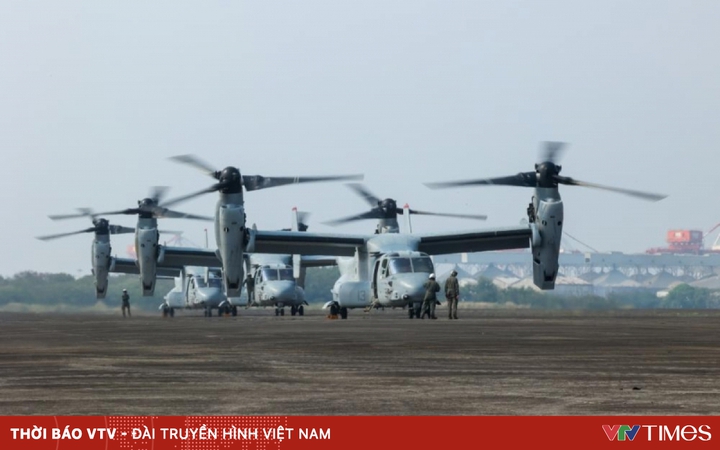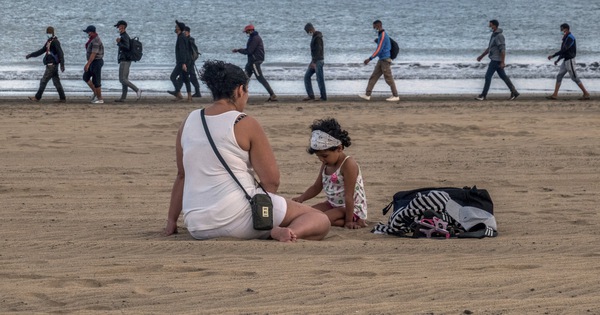East Sea amid fears of military escalation
Amidst an unprecedented rise in military spending, East Sea are also at risk when China increase military activity.
Yesterday (April 29), the South China Morning Post quoted Admiral Michael M.Gilday, commander of US naval operations, as saying that the Chinese military is experiencing a sudden development that makes the US need to react appropriately.
 |
Chinese warships during an exercise in the South China Sea Xinhua News Agency |
Responding to the threat from Beijing
Similarly, on April 28, CNBC quoted expert Nan Tian, of the Stockholm International Peace Research Institute (SIPRI) in Sweden, as warning that China’s continuous actions cause concern in the East Sea and South China Sea. East China Sea In recent years, countries in the region have stepped up their equipment to deal with risks.
In recent years, China has continuously increased its military presence and strengthened control in the East and South China Seas and the Taiwan Strait. In particular, when approaching the Taiwan Strait, mainland China regularly deploys its air force to approach the Dongsha (Pratas) archipelago in the north of the East Sea.
According to an announcement released by SIPRI on April 25, global military spending in 2021 exceeded 2 trillion USD, specifically about 2.1 trillion USD. This is the highest level ever. Accordingly, in 2021, the US spends on military at 801 billion USD, down 1.4% compared to 2020. China ranked second with 293 billion USD, up 4.7% compared to 2020. 2020. This is the 27th year in a row that China has increased its military spending.
This is said to promote countries in the region to increase. Specifically, according to SIPRI, in 2021, spending in Japan will increase 7.3% to 54.1 billion USD, South Korea will increase 4.7% to 50.2 billion USD, Australia will increase 4% to 31.8 billion USD. billion USD, while India increased 0.9% to 76.6 billion USD. The fact that countries strengthen their armed forces is a trend that has taken place in recent years. Typically, according to CNBC, the US in 2020 approved a contract worth $23 billion to supply Japan with F-35 stealth 5th generation fighters. Earlier this year, Northrop Grumman Corporation delivered an order of Global Hawk drones to Japan. Going forward, expected in 2026, Singapore also received F-35 fighter jets from the US.
Climb the ladder with stealth fighters
In fact, China has recently deployed stealthy fifth-generation J-20 fighter jets to patrol the East and South China Seas. Answering Thanh Nien about this development, Mr. Greg Poling, program director of AMTI – Center for Strategic and International Studies (CSIS, USA), said that the presence of China’s J-20 fighter jet in the Sea East is an important development. Specifically, Mr. Poling worried: “The J-20 is a stealthy 5th generation fighter, so in principle, it has an advantage over the 4th generation fighter lines that countries around the East Sea are using even though this is the case. are the best air forces in Southeast Asia.”
China reacts to the Australian prime minister’s warning
The South China Morning Post reported yesterday that the Chinese Defense Ministry criticized Australia for its opposition to the security treaty between China and the Solomon Islands, saying Canberra had no right to set any “red lines”. Earlier, Australian Prime Minister Scott Morrison said on April 24 that China’s construction of a military base in the Solomons would be a “red line” for Australia and the US. Chinese Defense Ministry spokesman Tan Kefei also called negotiations on building a naval base on the Solomon “fake news”, accusing Australia of deliberately distorting the facts and causing tension. Meanwhile, although the details are not clear, the above security treaty is believed to help Beijing establish a military base in the South Pacific.
central Intelligence
Also responding to Thanh Nien, Mr. Carl O.Schuster (former Executive Director of Joint Intelligence Center – Pacific Command of the US Navy and currently teaching at the University of Hawaii on international relations on international relations) , history) said that China’s sending of stealth 5th generation fighters to the East Sea and East China Sea will cause countries in the region to find ways to accelerate the progress of upgrading their air defenses, expanding air defense training and change measures to deal with the threat from Beijing.
China strengthens ambition
Meanwhile, China continues to boost its defense budget. Recently, the Global Times reported that China had just announced an increase defense budget in 2022 to 7.1%, reaching 1,450 billion yuan (equivalent to 230 billion USD). This increase is less than the 8.1% in 2018 and 7.5% in 2019, but higher than 2020 (6.6%) and 2021 (6.8%).
Comment on this move when replying YouthSatoru Nagao said that the fact that China has increased its defense budget by 7.1% this year shows that Beijing continues to pursue its long-standing ambition. Currently, China’s military spending is number 2 world after America. And in the Indo-Pacific, China’s military spending is far greater than that of any other neighboring country.
In addition, according to the SIPRI report, China increased its military spending by 76% between 2011 and 2020, despite a 10% decrease in the US. The total US defense budget in 2022 will increase by 2% compared to 2021, so China also increases military spending at a fast pace to catch up with the US. Therefore, countries in the Indo-Pacific are concerned about China’s ambitions.
Ask China to respect Vietnam’s sovereignty over Hoang Sa islands
On April 29, responding to Vietnam’s response to China’s issuance of a three-month fishing ban in the East Sea, including Vietnam’s waters, Vietnamese Foreign Ministry spokeswoman Le Thi Thu Hang asserted, as part of the ban, violating Vietnam’s sovereignty over the Paracel Islands and asked China to respect Vietnam’s sovereignty over the archipelago.
Ms. Hang stated: Vietnam’s stance on China’s fishing ban in the East Sea is consistent and has been well confirmed over the years. Accordingly, part of the scope of the fishing ban violates Vietnam’s sovereignty over the Paracel Islands, and Vietnam’s sovereign rights and jurisdiction are determined under the United Nations Convention on the Law of the Sea in 2014. 1982, Agreement on the delimitation of the Gulf of Tonkin between Vietnam and China signed in 2000.
“Vietnam asks China to respect Vietnam’s sovereignty over the Paracels, sovereign rights and jurisdiction over its seas when taking measures to conserve biological resources in the area,” he said. in the East Sea region, without complicating the situation, contributing to maintaining peace, stability and order in the East Sea region,” the spokesperson for the Ministry of Foreign Affairs of Vietnam emphasized.
Le Hiep
at Blogtuan.info – Source: thanhnien.vn – Read the original article here



